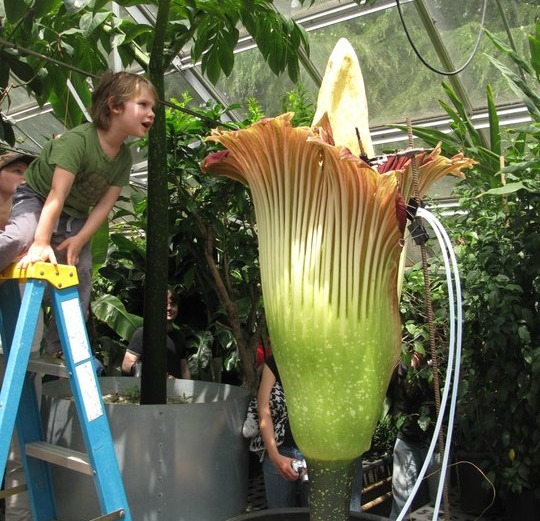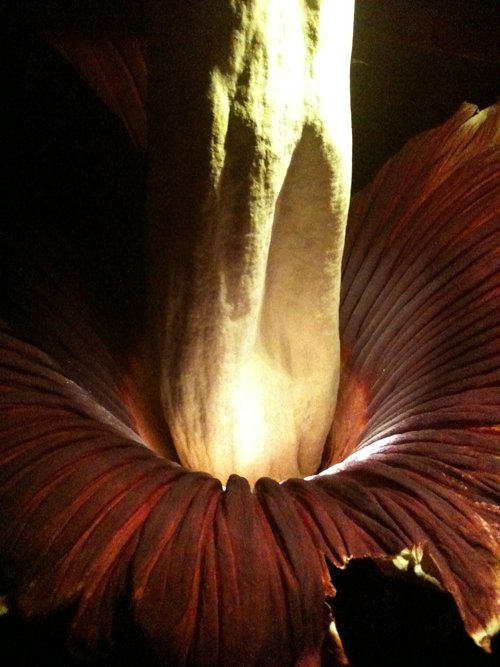Blooming Corpse Flower Causes Stink, Draws Crowds


A corpse flower — a colossal, person-sized plant that has an outsize personality and smell to match — is creating a malodorous spectacle this week at the University of Washington in Seattle.
Hundreds of people lined up to get a glimpse and a horrifying whiff of the aptly named corpse flower, which sends out a stench of rotting flesh during its mere hours-long bloom.
"You've heard about charismatic megafauna? Well, this is charismatic megaflora," said Doug Ewing, greenhouse manager at the university's department of biology, and the nauseous bloom's caretaker, who described the giant tuber as the panda bear or elephant of the plant world.
"It's put on a really good show," Ewing told OurAmazingPlanet.
The Amorphophallus titanum is native to the steamy jungles of Sumatra in Indonesia. At nearly 5 feet (1.5 meters) tall, the Seattle bloom is positively dainty compared to the 10-foot (3-m) monsters that can grow in the plant's native land.
The specimen on display had been dormant since 2003. Finally, as dusk began to fall on Wednesday (June 8), the titanum — an extremely distant relative of the potato — began to make its stinky move.
Ewing said the plants typically open at night, spewing forth the smell of death and decay as a come-hither scent to carcass-loving beetles, which flock to the titanum thinking a feast of rotten meat awaits.
Get the world’s most fascinating discoveries delivered straight to your inbox.
By the time the beetles discover the hoax, they are trapped inside the sneaky tuber. Then, as the smell slowly subsides, the plant's structure relaxes, allowing the beetles to escape through exits coated with pollen, which the beetles carry off to another titanum wearing a death-scented disguise.
It may repeatedly disappoint a bunch of beetles, but the elaborate plant reproduction strategy works.
So what exactly does a corpse flower smell like? Different to different people, Ewing said, "but it's a powerful, nauseating aroma. Just unplug your refrigerator, and a week later, open the door."
To avoid disrupting the titanum's progress, Ewing kept the lights off in the greenhouse overnight. Around midnight, as the stench was approaching its peak, Ewing shone a flashlight on the top of the spadix, the plant's central structure, revealing a ghoulish sight.
"You could see this whitish vapor coming up off of the spadix," Ewing said. "How spooky is that?!"
Ewing is an experienced titanum wrangler — this week's bloom is his fifteenth — but the reeking plants are unpredictable and full of surprises, he said.
Although the noxious spectacle kept Ewing at the greenhouse overnight, he enthusiastically embraced the opportunity to show off the huge and bizarre plant.
"It really makes people stop and look, and then they start asking questions," Ewing said. "It's such a wonderful stinking soapbox for us to use to talk about biology — so we're trying to milk it."
Andrea Mustain is a staff writer for OurAmazingPlanet, a sister site to LiveScience. Reach her at amustain@techmedianetwork.com. Follow her on Twitter @AndreaMustain.



